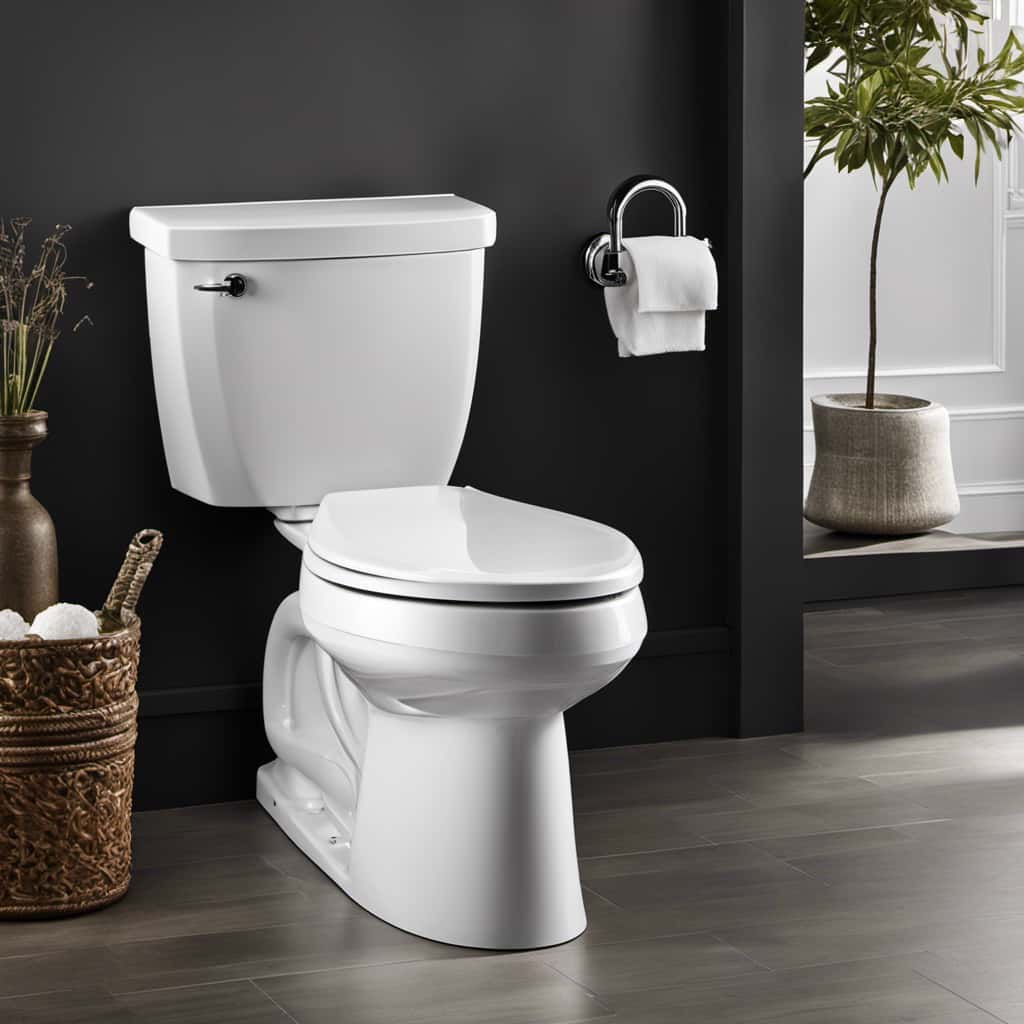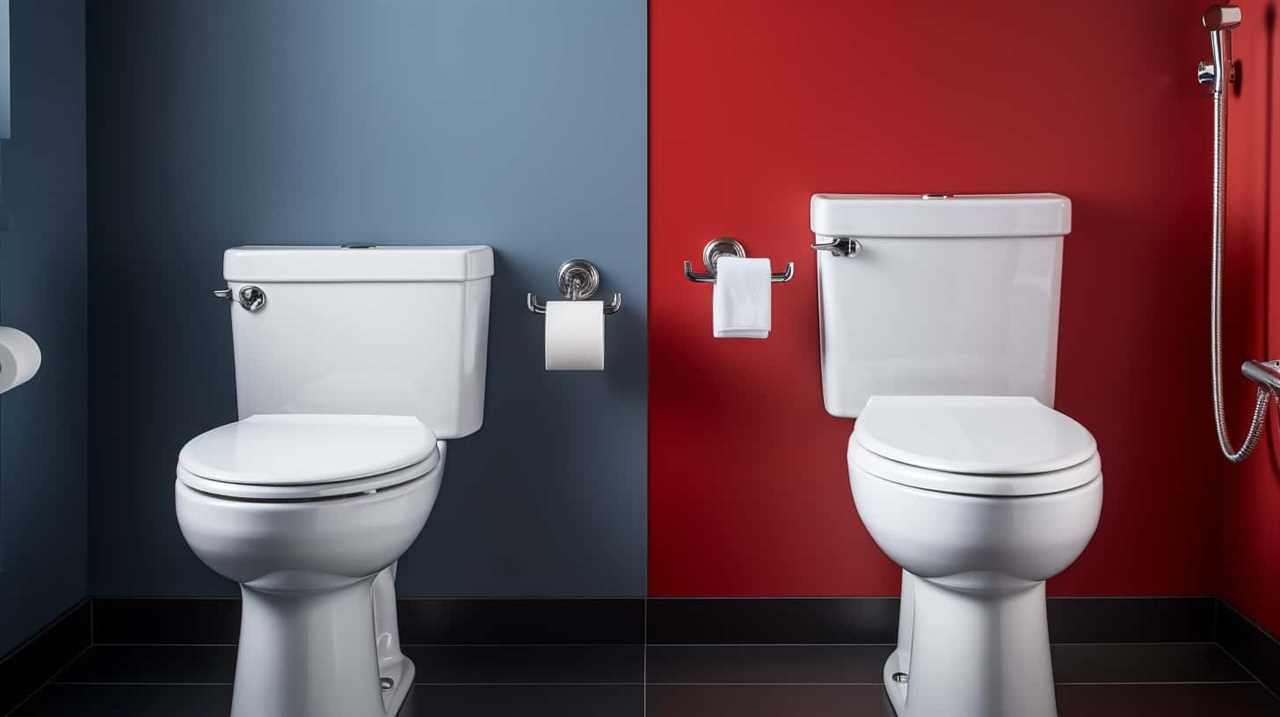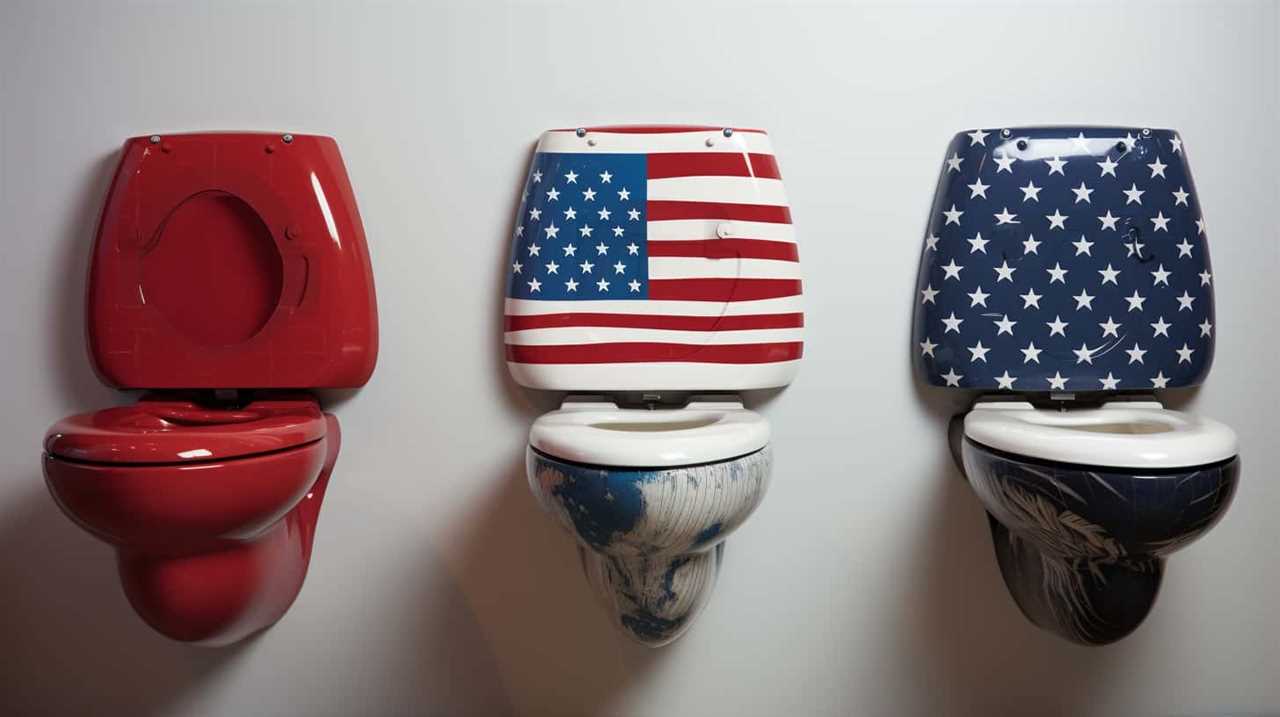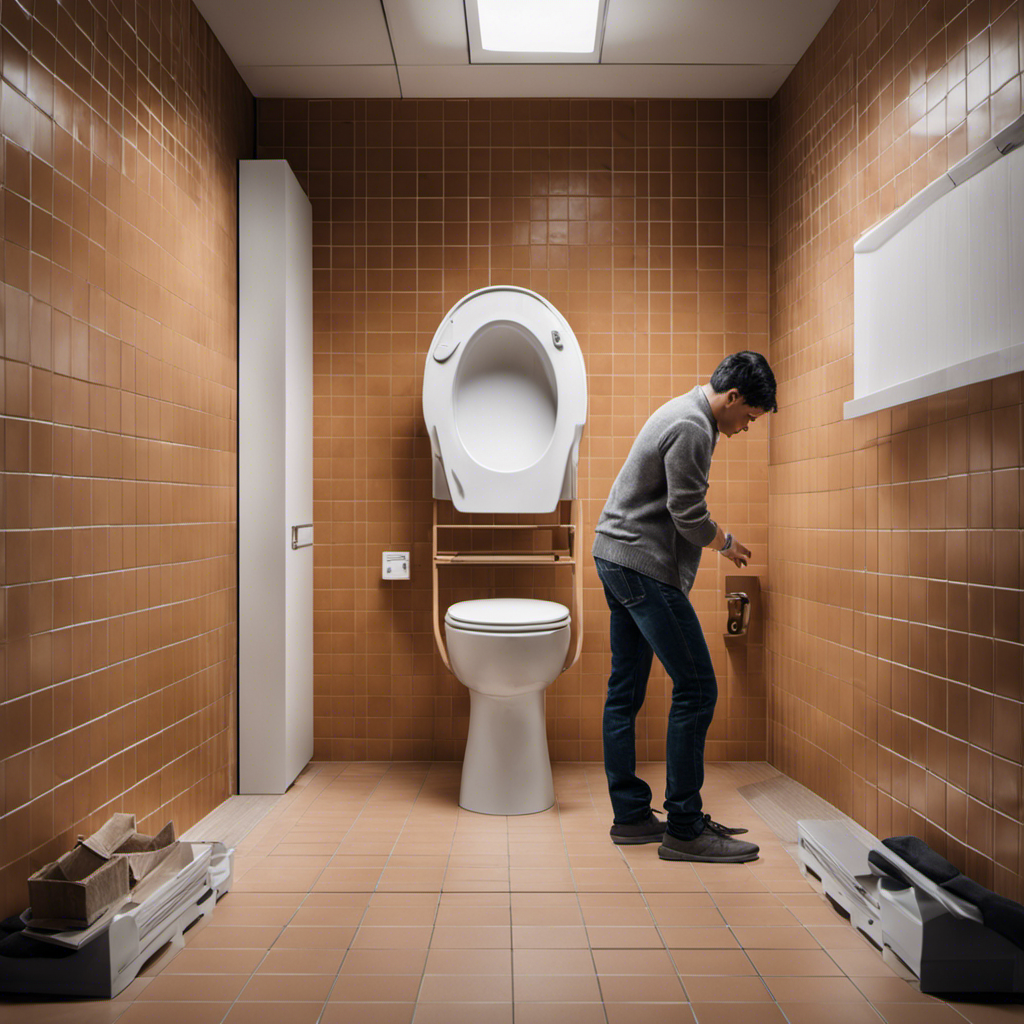Have you ever wondered why we can’t flush tissues down the toilet? It may seem convenient, but it can have serious consequences for the environment, our plumbing systems, and wastewater treatment.
Flushing tissues can lead to clogging, blockages, and costly repairs. In this article, we will explore the reasons behind this restriction and provide alternatives to safely dispose of tissues.
Join us as we delve into this topic and gain mastery over the proper disposal of tissues.
Key Takeaways
- Flushing tissues can lead to sewer blockages and overflows.
- Tissues made from virgin wood pulp contribute to deforestation and habitat destruction.
- Flushing tissues causes water pollution and carbon emissions from the manufacturing process.
- Tissues made from synthetic materials contribute to microplastic pollution in water bodies.
Environmental Impact
One of the main environmental impacts of flushing tissues down the toilet is that it can contribute to sewer blockages and overflows. However, the consequences of this seemingly innocuous act go far beyond just clogged pipes.

The production of tissues, particularly those made from virgin wood pulp, has significant deforestation consequences. Forests are cleared to make way for plantations, leading to habitat destruction and loss of biodiversity. Moreover, the manufacturing process of tissues involves the use of chemicals and energy, resulting in carbon emissions and water pollution.
Additionally, tissues made from synthetic materials can contribute to microplastic pollution in water bodies. These tiny plastic particles pose a threat to aquatic life and can enter the food chain.
As we delve further into the topic of ‘plumbing issues’, we’ll explore the specific challenges faced by flushing tissues down the toilet.
Plumbing Issues
To understand the plumbing issues associated with flushing tissues down the toilet, let’s examine the potential problems that can arise.

Flushing tissues down the toilet can lead to clogs and blockages in the plumbing system. Tissues are designed to be absorbent and don’t break down easily like toilet paper. As a result, they can accumulate and create obstructions in the pipes. These blockages can cause water to back up and overflow, leading to costly repairs and potential damage to your home.
To prevent these plumbing issues, it’s important to never flush tissues down the toilet. Instead, dispose of them in a trash bin. Regular maintenance, such as using a plunger or drain snake, can also help prevent clogs and reduce the cost of repairs in the long run.
Wastewater Treatment Problems
When it comes to flushing tissues down the toilet, we must consider the potential wastewater treatment problems that can arise.
One of the main issues is sewage contamination, which occurs when non-flushable items like tissues clog the plumbing system and cause backups. These backups can lead to sewage overflowing into streets, homes, and even bodies of water, contaminating the environment and posing significant health risks.

Sewage contamination can introduce harmful bacteria, viruses, and other pathogens into the water supply, increasing the chances of waterborne diseases.
Additionally, the presence of non-flushable items in wastewater can disrupt the treatment process at wastewater treatment plants. These facilities are designed to treat human waste and biodegradable materials, but when tissues and other non-flushable items enter the system, they can cause clogs, equipment damage, and increased maintenance costs.
Therefore, it’s crucial to dispose of tissues properly to avoid sewage contamination and the associated health risks.
Clogging and Blockages
We often encounter clogging and blockages in the plumbing system when we flush tissues down the toilet. This happens because tissues aren’t designed to break down in water like toilet paper. As a result, they can get stuck in the pipes, causing obstructions.

To prevent such issues, it’s essential to understand proper disposal methods and consider toilet paper alternatives. Here are some key points to keep in mind:
- Avoid flushing tissues, paper towels, or wet wipes down the toilet.
- Dispose of tissues in a waste bin or trash can instead.
- Use toilet paper that’s specifically designed to dissolve easily in water.
- Consider using bidets or wet wipes that are labeled as flushable alternatives.
- Regularly maintain and clean your plumbing system to prevent clogs and blockages.
Alternatives to Flushing Tissues
As we consider alternatives to flushing tissues, it is important to explore other options for proper disposal. Instead of flushing tissues down the toilet, there are various reuse options and composting methods that can be implemented. By reusing tissues, we can reduce waste and save money. For example, tissues that have only been lightly used can be set aside for future use. Additionally, tissues can be composted to create nutrient-rich soil for gardening. Composting involves breaking down organic materials, such as tissues, through natural decomposition. This process not only reduces waste but also helps to enrich the soil. To facilitate understanding, we have provided a table below outlining some alternative options for disposing of tissues:
| Alternative Option | Description |
|---|---|
| Reusing Tissues | Lightly used tissues can be set aside for future use. |
| Composting | Tissues can be composted to create nutrient-rich soil. |
| Proper Disposal | Tissues should be disposed of in designated waste bins or compost bins. |
Frequently Asked Questions
How Long Does It Take for Tissues to Decompose in the Environment?
Tissues can take several weeks to several months to decompose in the environment, depending on various factors like temperature and moisture. Their slow decomposition rate can have a significant environmental impact if not disposed of properly.
Can Flushing Tissues Down the Toilet Cause Damage to the Sewage Pipes in My Home?
Flushing tissues down the toilet can cause serious damage to the sewage pipes in our home. It is important to understand proper disposal methods to prevent clogs, backups, and costly repairs.

Are There Any Health Risks Associated With Flushing Tissues Down the Toilet?
Flushing tissues down the toilet can pose health risks and have an environmental impact. They can clog pipes, leading to sewage backups and potential exposure to harmful bacteria. It is best to dispose of tissues in the trash.
What Are the Most Common Causes of Clogging and Blockages in the Sewage System?
The most common causes of sewage blockages include flushing inappropriate items, such as tissues, down the toilet. To prevent blockages, it’s important to only flush toilet paper and properly dispose of other materials.
What Are Some Eco-Friendly Alternatives to Flushing Tissues Down the Toilet?
Eco-friendly alternatives to flushing tissues down the toilet include using biodegradable options like bamboo or recycled toilet paper. These choices help reduce environmental impact and promote sustainability in waste management.
Conclusion
In conclusion, it’s important to understand why we can’t flush tissues down the toilet. Not only does it have severe environmental impacts, but it also causes plumbing issues, wastewater treatment problems, and clogging and blockages.

Therefore, it’s crucial to dispose of tissues properly by using alternatives such as throwing them in the trash. Remember, prevention is better than cure when it comes to maintaining a healthy and functional plumbing system.
So, let’s keep our toilets tissue-free and avoid going down the drain!










